INDIAN ARMED FORCES CHIEFS ON
OUR RELENTLESS AND FOCUSED PUBLISHING EFFORTS

SP Guide Publications puts forth a well compiled articulation of issues, pursuits and accomplishments of the Indian Army, over the years

I am confident that SP Guide Publications would continue to inform, inspire and influence.

My compliments to SP Guide Publications for informative and credible reportage on contemporary aerospace issues over the past six decades.
- Interim Defence Budget 2024-25 — An Analysis
- Union Defence budget 2024
- Indian Army: In quest of greater firepower and policy recommendations for gaps
- Indian Army Annual Press Conference 2024
- 6G will transform military-industrial applications
- Tata Boeing Aerospace Delivers 250 AH-64 Apache Fuselages, Manufactured in India
Indian Army orders 118 Arjun Mk.II tanks
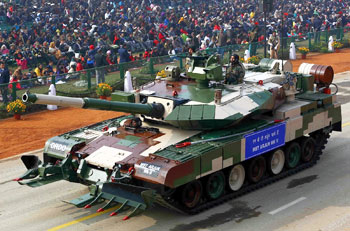
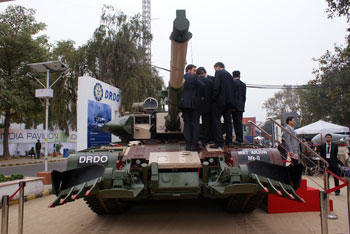
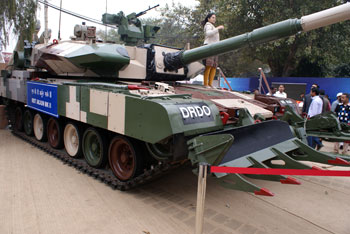
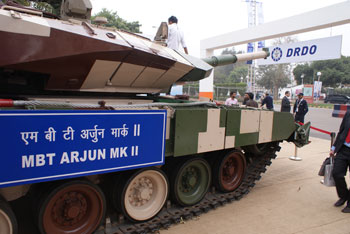
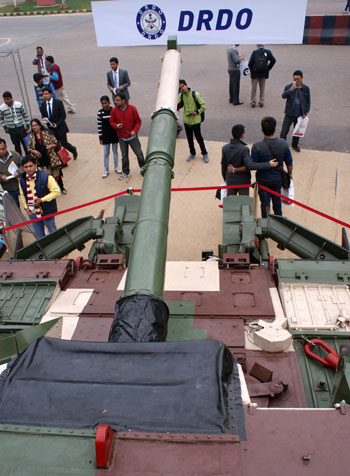
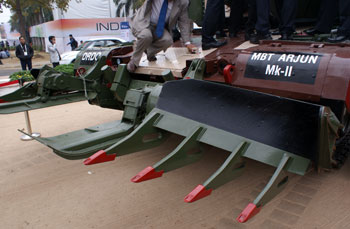
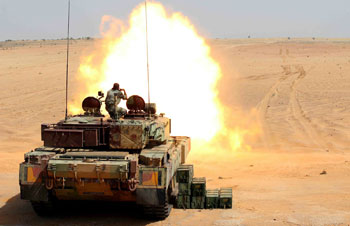
An air of cautious relief will pervade the Combat Vehicles R&D Establishment (CVRDE), the DRDO's tank development laboratory on Chennai's outskirts. The Indian Army has been cleared to place an order for 118 Arjun Mk.II main battle tanks. With the already inducted fleet of 124 Arjun Mk.I tanks in two regiments in Rajasthan, the Army will be set to operate a total of four Arjun regiments. But the good news for the Arjun programme potentially ends right here. If indications are to be believed, this will be the last order for an Arjun tank of any type. The total number (242 tanks) on order is far from good news: The DRDO has said that any order below 500 tanks (in a mix of Mk.I and Mk.II) makes Project Arjun a dead loss. This is precisely what it is likely to be, which is why products based on the Arjun chassis (bridge-layer tank, self-propelled artillery) or Arjun turret (Tank-X) are being pushed too. But for the Arjun tank itself, the fresh order could be a death knell.
At Defexpo this year, the Arjun Mk.II was on public display for the first time, following its participation in the Republic Day Parade. It underwent two more critical trial phases supervised by the Indian Army, pertaining to mobility in water (medium fording), mobility across obstacles, missile firing and fresh regular ammunition firing routines. These rounds were undertaken with during the summer months, with a handful of test points remaining. Full user trials began in May 2012. The Indian Army had indented for 124 of the Mk.2 for two tank regiments, but has now committed to inducting 118 tanks. The DRDO had been pushing for an order of at least 300 Arjun Mk.IIs to shore up the programme and speed up production at the Heavy Vehicles Factory adjoining the CVRDE in Avadi.
The order, while welcome, is also a major blow to the economics of the programme by DRDO's own estimates. In 2008, the DRDO wrote to the MoD saying, "The DRDO is working on the development of the futuristic Mark II MBT with suitable technological upgrades, which can be introduced later after completion of production of at least 500 tanks of the present version. DRDO has tacit knowledge in this area of Combat Vehicle Engineering and possesses full competence in developing futuristic combat vehicles. Any battle tank has a service life of 30 years and goes through technology up gradation progressively. Since MBT-Arjun is an indigenous tank it is all the more easier to bring upgrades and in our opinion the MBT-Arjun will be a viable platform for the futuristic use as well."
The Army refused to comply with an additional order, given that its resources had been committed to purchasing more T-90S Bhishma tanks from Russia for license production at Avadi. What the DRDO has managed in the meanwhile is to meet the Army's requirements with the Arjun Mk.II. The tank now incorporates enhanced firepower with Automated Target Tracking and greater variety of ammunition including gun-fired anti-tank missile, thermobaric ammunition; enhanced protection that include Explosive Reactive Armor, laser warning and countermeasure System, a mine plough, a remotely operable anti-aircraft weapon, a roof mounted driving seat; advanced land navigation system and enhanced night vision capabilities.
In 2008, the DRDO had also noted, "The major imported systems in the tank are the powerpack and gun control system from Germany and Delft-SAGEM gunner's main sight from OIP Belgium. The percentage of import content is 60% in the first lot of 124 tanks to be productionised, which will be reduced to under 45% with the manufacture of first 200 tanks and under 30% with the manufacture of about 500 tanks." This indicates that the Arjun tank, ironically, remains largely a foreign product, both in terms of value as well as critical systems.
Weight has remained an issue with the Arjun Mk.II, significantly heavier than the Arjun Mk.I, though the DRDO has dispelled comparisons with the T-90S. "T-90S and MBT Arjun tanks are of different class. Both the tanks have their own special features. In MBT Arjun, we have more power to weight ratio, hydro-pneumatic suspension for better ride comfort and a stable platform to fire on the move, better quality class of Gun Control System and Fire Control System etc. Missile firing capability of Arjun was demonstrated. T-90S tank has missile firing capability and lower silhouette. Tanks of both the class are required by the Indian Army," the DRDO had said in 2008 during the big T-90S push.
In March 2000, the Army cleared MBT Arjun for production and placed an indent for 124 Arjun Mk.I tanks 2 regiments. The first batch of five Arjun production tanks manufactured at Heavy Vehicle Factory (HVF), Avadi were handed over to the Army by then Defence Minister Pranab Mukherjee a decade ago on 7 August 2004.
"Teething problems during the process of productionisation are inevitable. The process of TOT for the MBT will mature and stabilize only after 200 to 300 tanks have been actually produced by the production agency. Hence, we need to have patronage from the government and Army in terms of more orders for our indigenous MBT-Arjun. If the army does not place further orders for Arjun we cannot even amortize the infrastructural investments made by the government for its productionisation, thereby resulting in wasteful expenditure. The Army should place orders for additional 300 tanks before we can break even," said the DRDO six years ago in its most direct appeal to the government to intervene and force the Army to support the Arjun in a bigger manner. But that was not to be.
For the DRDO, the order is possibly the final play in a long struggle for credibility. But it is, more seriously, a blow to the economics of the programme, in which accountability, both in DRDO and the Army, will need to be fixed in the years to come.





